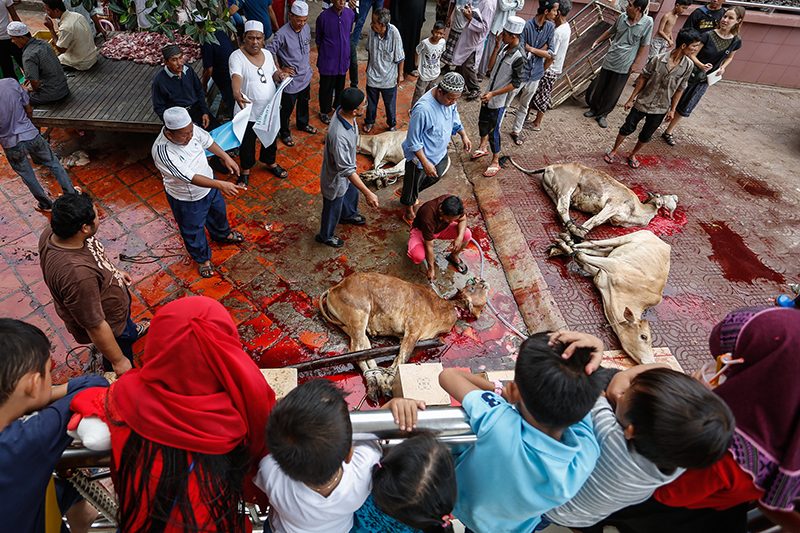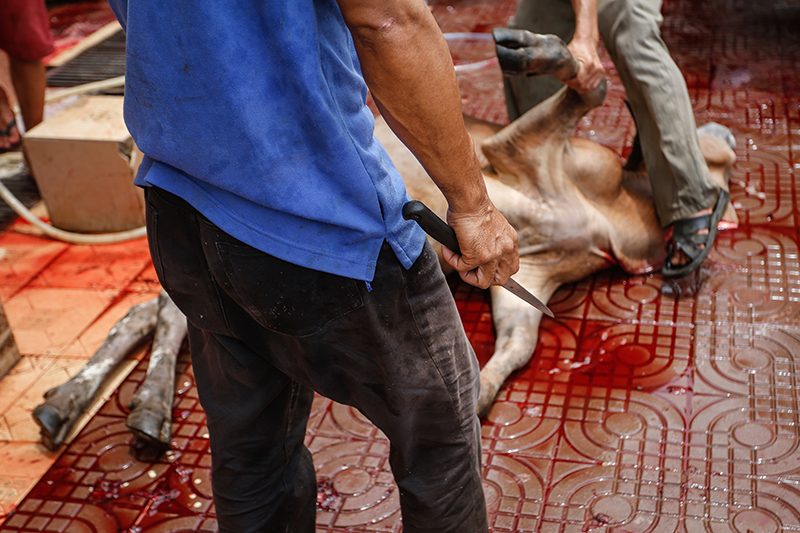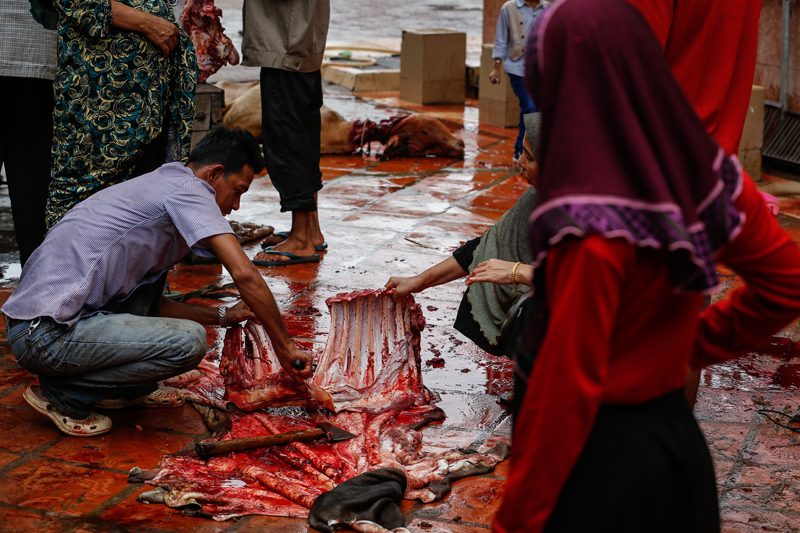Ning Ganna eats meat so rarely that she has no idea what a kilogram of beef costs. The 28-year-old makes enough from her job at a garment factory to buy occasional scraps of chicken and fish for her family, but little more.
On Monday, however, as she sat wearing her best hijab in a dusty market off National Road 5, Ms. Ganna said that she could not wait to go home and fry fresh beef for her two young daughters. Beef that was a gift.

“I’m so happy,” she said, finishing a bowl of rice porridge in front of a dark stall. “I work so hard these days that I have no time to see my children. Now I can spend time with them, and my little brothers and sisters, too.”
The garment factory where she works, Choung Meas, would not give the Eid al-Adha holiday to her or her 30 other Muslim co-workers. But almost all of them took it off anyway, she said, giving up $10 in income they could hardly afford.
Eid al-Adha, the “Feast of Sacrifice,” is one of the two annual holidays celebrated worldwide by Muslims. It commemorates the willingness of Ibrahim to sacrifice his son to God. In memory of that sacrifice—which didn’t happen, as God sent an angel at the last minute to intervene, as is written in the Quran—Muslims who can afford to sacrifice a cow or a ram on the morning of the feast. They keep some of the meat for their families. The rest they give to the poor.
For a number of Muslims, including a group of Malaysians who bought 30 cows for the Muslims living in Ms. Ganna’s village on the outskirts of Phnom Penh, this means distributing it to Cambodian Muslims.
“This holiday is to bring us closer to our God,” said Sa Leh, an imam at the Nussunain Mosque, where Ms. Ganna worships, as he presided over the sacrifice of 12 of the animals. Every cow, he explained, was purchased locally by a group of Malaysian visitors who had been moved by the community’s poverty.
As Mr. Leh spoke, eight men gathered, placing their hands on the flanks and back of a brown cow lying in the courtyard. They prayed in Arabic and slit its throat with a sharpened blade. Beside them, another group of men prepared to cut the meat into portions.

“The prayer is a prayer of Allah,” said Mr. Leh, repeating the prayer. “It dedicates the animal and the sacrifice.”
The 12 cows would go to nearby fishing villages where 1,600 Cham families live, Mr. Leh said. Each received about a fifth to a third of a kilogram of beef. Like many Cambodian Muslims, about half of whom live in extreme poverty, most locals could not afford to buy the meat themselves.
This year, however, thousands didn’t have to. Ahmad Yahya, a prominent CPP politician and president of the Cambodian Muslim Community Development Organization, explained that donations from around the world were on the rise.
“Hundreds of visitors came this year to bring cows,” Mr. Yahya said. “Turkey sent some, the U.S. sent visitors. Hundreds of Malaysians came.”
He estimated that over 1,000 cows had been donated to Cambodia’s roughly 700,000 Muslims for this year’s feast. While in earlier years foreigners generally chose to send money, many these days chose to pay Cambodia a personal visit instead, he said.
“They want to visit Cambodia, like a tourist,” he said, adding that the festival compelled them to respond to the widespread poverty.
“Our people are poor,” he said. “Poor and average, but most are poor.”

Man Ka, who lives down a narrow alley near the Nussunain Mosque, received the head of one of the donated cows. Her family, with six grandchildren, would eat the meat over the course of the week, she said—making soup so it would last.
“I eat meat two times a year,” she said in her tiny wooden house overlooking the Tonle Sap river. “Before, we would never kill a cow. We’d only kill a chicken. That’s all we had.”
As in many Cham communities, most in her village fish for a living. But with fish stocks dwindling in recent years, she said, many men in town have left to work far away. The women in her family are all unemployed.
“We are thankful to God,” she said while preparing a plate of small cakes to serve with cold tea. “We are so happy to feed our grandchildren this beef.”




